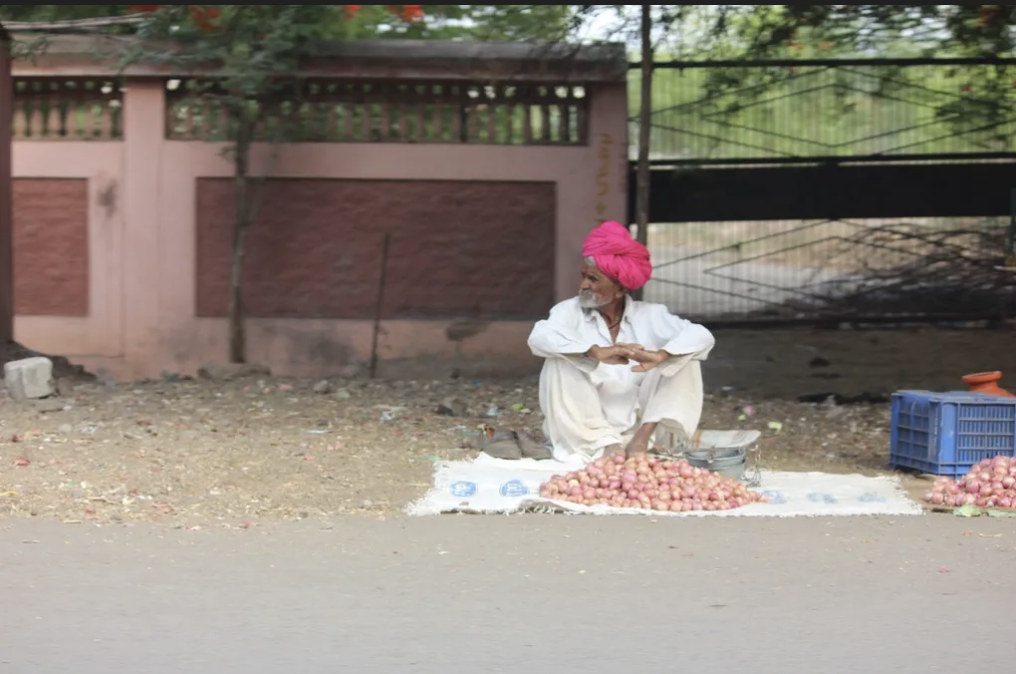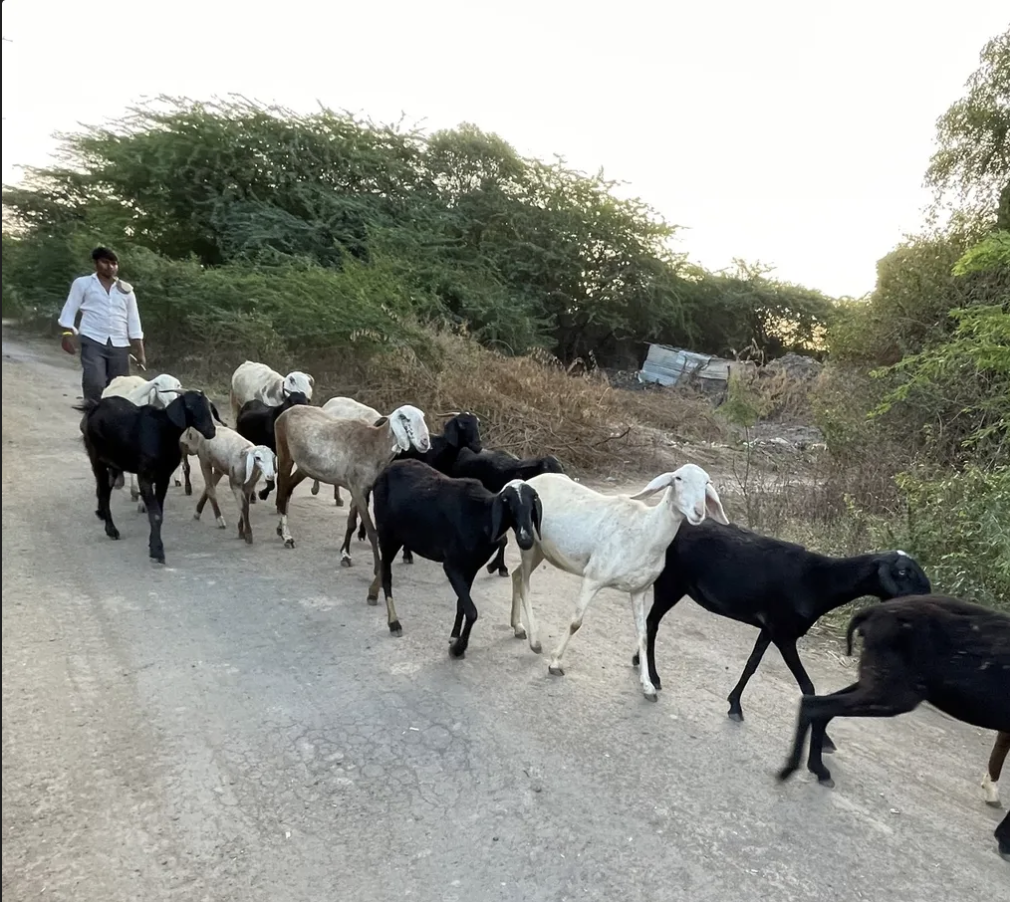Contents
- Main Occupations
- Occupations and Employment Patterns
- Labor Unions
- Technical Education Institutions
- Government Polytechnic, Dharashiv
- College of Engineering Dharashiv (COE), Dharashiv
- Adarsh Shikshan Prasarak Manal’s D. Pharmacy Institute, Dharashiv
- Graphs
- Workforce Composition
- A. Main Worker Population
- B. Marginal Worker Population
- C. Non-Worker Population
- D. Age Composition of Main Workers
- E. Age Composition of Marginal Workers
- F. Age Composition of Non-Workers
- Employment Characteristics
- A. Number of Workers
- B. Workers: Hired vs Not-Hired
- C. People Working in Govt Sector/PSUs
- D. People Working in Cooperatives
- E. People Working in Private Sector
- F. People Working in MSMEs
- G. Govt, Semi-Govt, and Private Employees
- H. Government Employment
- Sources
DHARASHIV
Labor
Last updated on 7 November 2025. Help us improve the information on this page by clicking on suggest edits or writing to us.
Main Occupations

As Dharashiv (Osmanabad) is not an industrial district, the primary occupation for generations has been agriculture-based. The district had three ‘sanskar kendras’ which aimed to facilitate cultural interests and self-growth of the labourers by discouraging them from indulging in addictive habits like drinking. These were situated in the Labour-concentrated areas of Latur, Dharashiv, and Tuljapur.
Occupations and Employment Patterns

According to the Census of 1961, 43% of the population was engaged in agriculture, 1.4 % in mining, and 2% in household industry.

In the 1960s, the rural rate showed a very small and steady rise, even though the prices of goods increased substantially due to the shortage of supply. Most of the scheduled caste either worked on their land or served as agricultural labour on other farms or as tenant cultivators.

The effects of climate change have led to erratic rainfall and drought conditions, making it difficult for local farmers to sustain agricultural activities. This has forced many labourers to migrate more frequently in search of consistent work. The primary source of seasonal employment in Dharashiv is agriculture. Many workers engage in tasks such as sugarcane cutting and other agricultural activities during peak seasons, typically from October to April. This aligns with the harvesting periods when labour demand is high.
The population of main workers in Dharashiv is 7,01,894, and that of agricultural labourers is 2,65,167. Cultivators grow crops on their fields or on those that belong to others by themselves, while agricultural labourers are landless labourers who work on others’ land. The non-working population of the district is, however, equal to 8,83,660, of which 56% are females according to Census 2011 Data.
The number of posts filled by females in the government sector has at no point from the year 2016 to 2021 exceeded 6,600. According to the categorisation of the 5th pay commission, the highest number of employees falls in the Class E group than any of the Class A to Class D categories taken individually.
Labor Unions
The Chief Labour Commissioner (Central) has jurisdiction over labour laws and regulations applicable to Dharashiv. This includes verifying trade unions and ensuring compliance with labour standards. Meanwhile, various trade unions operate within the district, representing different sectors such as agriculture, construction, and manufacturing. These unions engage in collective bargaining and provide legal assistance to their members. The District Labour Office in Dharashiv oversees labour-related issues, including the registration and regulation of trade unions. The office is located at Samta Nagar, Gharad Building, 1st Floor, Dharashiv.
In addition to traditional labour unions, cooperative societies such as the Dharashiv Zilha Majur Sahakari Sangh also contribute to worker welfare by providing support services and collective bargaining power for their members
Technical Education Institutions
Government Polytechnic, Dharashiv
Government Polytechnic, Dharashiv, established in 1985, is a key institution in the region. It offers a range of diploma programs across six branches of engineering, each designed to be completed in three years. The college is affiliated with the Maharashtra State Board of Technical Education (MSBTE) and is approved by the All India Council for Technical Education (AICTE). Facilities at the polytechnic include hostels, laboratories, a library, and sports amenities, creating a conducive environment for learning and personal development.
College of Engineering Dharashiv (COE), Dharashiv
College of Engineering Osmanabad (COE) aspires to be a leader in technical education through innovative teaching methodologies and practical skill development. The college focuses on fostering research and industry interaction while maintaining high academic standards.
Adarsh Shikshan Prasarak Manal’s D. Pharmacy Institute, Dharashiv
Adarsh Shikshan Prasarak Manal’s D. Pharmacy Institute offers a full-time diploma in Pharmacy. This institute provides specialised training aimed at preparing students for careers in the pharmaceutical field and is recognised by the AICTE.
Graphs
Workforce Composition
Employment Characteristics
Sources
Government of Maharashtra. Labour Commissioner Contact Information. Maharashtra Labour Department.https://mahakamgar.maharashtra.gov.in/lc-con…
Ministry of Cooperation, Government of India. Cooperative Societies in Maharashtra - State Dashboard Report. National Cooperative Database.https://cooperatives.gov.in/hi/state-dashboa…
Ministry of Labour & Employment, Government of India. Jurisdiction of the Chief Labour Commissioner (CLC). CLC India.https://clc.gov.in/clc/jurisdiction
Varsha Torgalkar. 2024. Why Marathwada’s Farm Workers Are Migrating Even in Summer: Changing Rainfall Patterns and Groundwater Shortages Push Marginal Farmers to Migrate Year-Round. IndiaSpend, September 4https://www.indiaspend.com/agriculture/why-m…
Last updated on 7 November 2025. Help us improve the information on this page by clicking on suggest edits or writing to us.